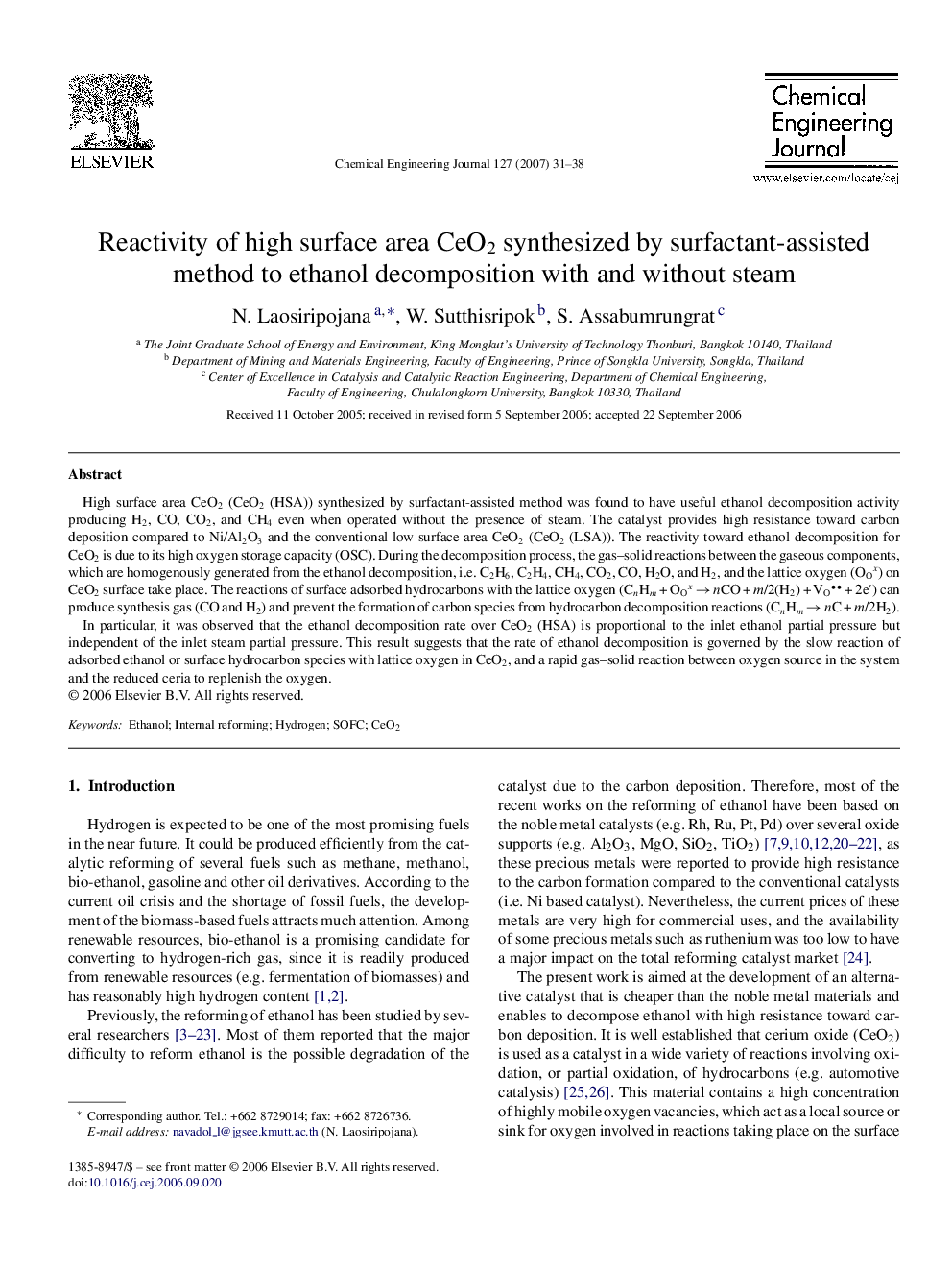| Article ID | Journal | Published Year | Pages | File Type |
|---|---|---|---|---|
| 154109 | Chemical Engineering Journal | 2007 | 8 Pages |
High surface area CeO2 (CeO2 (HSA)) synthesized by surfactant-assisted method was found to have useful ethanol decomposition activity producing H2, CO, CO2, and CH4 even when operated without the presence of steam. The catalyst provides high resistance toward carbon deposition compared to Ni/Al2O3 and the conventional low surface area CeO2 (CeO2 (LSA)). The reactivity toward ethanol decomposition for CeO2 is due to its high oxygen storage capacity (OSC). During the decomposition process, the gas–solid reactions between the gaseous components, which are homogenously generated from the ethanol decomposition, i.e. C2H6, C2H4, CH4, CO2, CO, H2O, and H2, and the lattice oxygen (OOx) on CeO2 surface take place. The reactions of surface adsorbed hydrocarbons with the lattice oxygen (CnHm + OOx → nCO + m/2(H2) + VO + 2e′) can produce synthesis gas (CO and H2) and prevent the formation of carbon species from hydrocarbon decomposition reactions (CnHm → nC + m/2H2).In particular, it was observed that the ethanol decomposition rate over CeO2 (HSA) is proportional to the inlet ethanol partial pressure but independent of the inlet steam partial pressure. This result suggests that the rate of ethanol decomposition is governed by the slow reaction of adsorbed ethanol or surface hydrocarbon species with lattice oxygen in CeO2, and a rapid gas–solid reaction between oxygen source in the system and the reduced ceria to replenish the oxygen.
